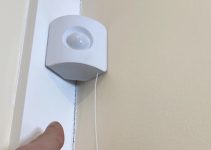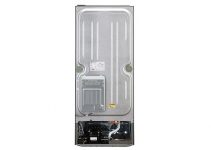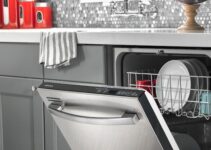We’ve all been there: you reach into your refrigerator for a fresh vegetable or a jug of milk, only to find it’s turned into a block of ice. While inconvenient, it doesn’t always signify a major appliance malfunction.
Here are some reasons why your refrigerator might be freezing your food, and how to prevent such problems in the future:
- Temperature Settings
- Location of Food in the Refrigerator
- Blocked Vents
- Faulty Thermostat
- Door Seal Issues
- Malfunctioning Damper
- Preventive Measures
Temperature Settings
The simplest explanation is that your refrigerator’s temperature settings are too low. Refrigerators maintain a specific temperature to preserve food freshness and inhibit bacterial growth. If the settings are too low, this can result in freezing. The FDA recommends a refrigerator temperature of around 40 degrees Fahrenheit (or 4 degrees Celsius), while others suggest maintaining between 35-38 degrees Fahrenheit (1.7-3.3 degrees Celsius) for optimum performance. To correct this, regularly check and adjust your temperature settings to fit within this range.
How To Fix
If your fridge doesn’t display the temperature, consider purchasing a refrigerator thermometer to monitor it accurately. Regular checks can help ensure that the temperature stays within the safe zone.
Location of Food in the Refrigerator
The placement of your food can also lead to freezing. The back of the refrigerator tends to be the coldest, so delicate items like fruits, vegetables, or liquids stored there might freeze. To avoid this, keep these items towards the front or in the crisper drawers, designed to maintain a different humidity and temperature level. Some fridges even have adjustable shelves or special zones for specific food types.
How To Fix
Research your refrigerator’s design. Many newer models have specific areas designed to store certain types of food. Following these guidelines can help prevent freezing and extend the freshness of your food.
Blocked Vents
A refrigerator uses vents for air circulation, ensuring a consistent temperature. If something obstructs these vents, such as a large item, it could result in uneven cooling and potential freezing.
How To Fix
Regularly check for obstructions and rearrange your refrigerator contents as necessary to allow for proper air flow. Be mindful when restocking your fridge after grocery shopping. Leaving space between items can help improve air circulation and prevent cold spots that could freeze your food.
Faulty Thermostat
Should the above solutions prove unfruitful, you might be dealing with a thermostat issue. If it’s not correctly regulating the temperature or controlling the compressor, this can lead to over-cooling. In this case, you may need a professional to inspect and potentially replace the thermostat.
How To Fix
While this is a task best left for professionals, being aware of your fridge’s behavior can provide them with useful information. Is the compressor running too frequently? Does the temperature fluctuate wildly? These can be signs of a faulty thermostat.
Door Seal Issues
A damaged or loose refrigerator door seal or gasket could also cause freezing. It can allow warm air to enter, which might make the refrigerator overcompensate and cool too much. Regularly inspect the seal for any wear and tear, and replace it if necessary. A simple way to test your seal is by closing the door on a thin piece of paper. If you can pull the paper out easily, it might be time to replace the seal.
How To Fix
Routine checks can catch a failing seal early. One way to test your seal is by performing the dollar bill test. Close your refrigerator door on a dollar bill and then try to pull it out. If it slides out easily, your door seal may need to be replaced.
Malfunctioning Damper
The damper controls the flow of cold air from the freezer to the refrigerator. If it’s stuck open, it can lead to overcooling and freezing in the refrigerator compartment. A professional can assist in diagnosing and fixing a faulty damper.
How To Fix
Similar to a faulty thermostat, a malfunctioning damper may require professional assistance. But being aware of its location and noticing if excessive cold air is blowing into the fridge compartment can help diagnose the issue.
Preventive Measures
Maintaining regular refrigerator maintenance can help avoid these issues. This includes cleaning the condenser coils every six months, defrosting the freezer if it’s manual defrost, and not overloading the fridge to allow for good airflow.
How To Fix
- Routine Cleaning: A clean fridge is a happy fridge. Regularly clean the interior to prevent any build-ups that might affect performance.
- Avoid Overfilling: While it can be tempting to stock up, try not to overload your fridge. This can obstruct air vents and cause uneven cooling.
- Regular Inspections: Regularly inspect the door seals, interior, and exterior for any visible issues.
When to Call a Professional
Should you continue to encounter difficulties despite the suggested remedies, it would be beneficial to engage the services of a professional appliance technician.
Our highly skilled experts have the knowledge and tools to accurately diagnose the underlying issue. They can provide effective solutions to prevent unnecessary food spoilage and ensure the optimal performance of your refrigerator for the long term. We’re here to help, so don’t hesitate to reach out.





